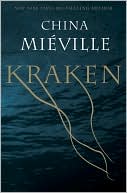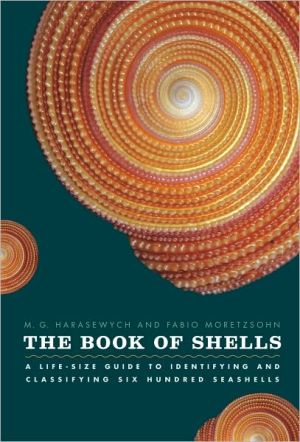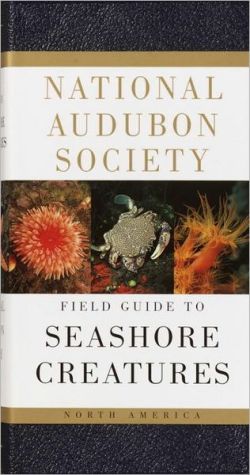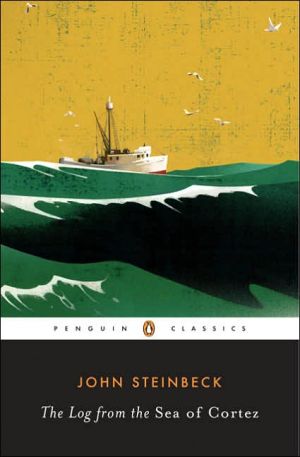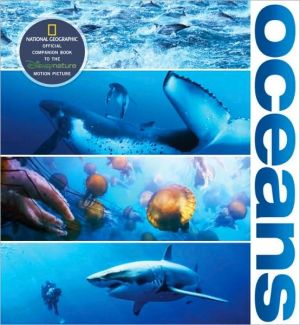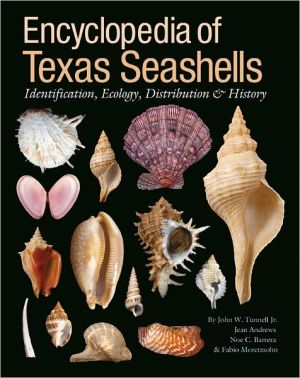Eye of the Albatross: Visions of Hope and Survival
“One of the most delightful natural history studies in decades.” —The Boston Globe\ Eye of the Albatross takes us soaring to locales where whales, sea turtles, penguins, and shearwaters flourish in their own quotidian rhythms. Carl Safina’s guide and inspiration is an albatross he calls Amelia, whose life and far-flung flights he describes in fascinating detail. Interwoven with recollections of whalers and famous explorers, Eye of the Albatross probes the unmistakable environmental impact of...
Search in google:
“One of the most delightful natural history studies in decades.” —The Boston GlobeEye of the Albatross takes us soaring to locales where whales, sea turtles, penguins, and shearwaters flourish in their own quotidian rhythms. Carl Safina’s guide and inspiration is an albatross he calls Amelia, whose life and far-flung flights he describes in fascinating detail. Interwoven with recollections of whalers and famous explorers, Eye of the Albatross probes the unmistakable environmental impact of the encounters between man and marine life. Safina’s perceptive and authoritative portrait results in a transforming ride to the ends of the Earth for the reader, as well as an eye-opening look at the health of our oceans. New Yorker The heroine of this powerful tale of marine life in the Pacific is Amelia, a Laysan albatross who was tagged with a satellite transmitter so that biologists could track her movements. Safina, author of the memorable "Song for the Blue Ocean," offers up a remarkable portrait of Amelia as she glides thousands of miles, journeying from tropical waters to sub-Arctic seas, spending almost all of her life in the air. And he describes with equal vividness the ocean across which she travels: fusing ecological history and serious science to great effect, he shows how the delicate interplay between human intervention and natural adaptation affects the lives of seals, sharks, turtles, and seabirds. Although the author is never less than outraged at the damage that humans can cause, his critique is nuanced, and he shows how, in some respects, the ocean is healthier today than it was a century ago. The book goes astray only when he devotes time to the personal lives of his fellow-scientists, whose obsession with albatrosses is far less interesting than the albatrosses themselves.
Eye of the Albatross\ \ \ PRELUDEWHEN THE WIND DROPS in late afternoon, Amelia, already hundreds of miles from land, rises on her own power, flapping more than she'd prefer. With her breast muscles pulling on the long bones of her wings, those wings biting like propellers to pull her through the air, she is using up more of the energy she's here to replenish. After rising on a small gust of breeze, Amelia lets gravity take over the work again, gliding downward and forward like a wind-driven snowflake. When her flight line dips, her wing tip traces a thin line on the sea, leaving her spare signature upon the waters. This evanescent track, the only mark of her passage, vanishes in moments, fleeting as her presence here in a body built to move only forward.When the wind returns, she sets her wings and, without anything perceivable as bodily movement, continues for another hundred miles, flying in long undulations on the propellant energy of the breeze. Hers is the billowy motion of a life under sail. As Archibald MacLeish wrote, "A poem should be wordless as the flight of birds"; and so Amelia is a kind of living poetry upon the ocean. \ THESE IMMENSE CREATURES we call "albatross" are the greatest long-distance wanderers on Earth. Big birds in big oceans, albatrosses lead big, sprawling lives across space and time, traveling to the limits of seemingly limitless seas. They accomplish these distances by wielding the impressive—wondrous, really—body architecture of creatures built to glide indefinitely.The physics of an albatross's wing differs from that of most other birds, whose bodies are designed for powered flight. That is because albatrosses are constructed more to float in the air than to fly. Compared tomany other birds, which power flight with elongated "hand" bones, the proportions of an albatross wing are humanlike—long arm bones, short "hand" bones—almost as though humans were also meant to glide. Or as if, were we suddenly transformed into birds, we would most naturally become albatrosses.Our physical parallels with albatrosses suggest our metaphorical relatedness. In Coleridge's "Rime of the Ancient Mariner," the sailor who kills an albatross is compelled to wear around his neck the evidence of his crime against nature. Even two centuries ago, the bird symbolized good luck and beneficent companionship, harmed only at our peril—a seabird with power enough to convey a universal cautionary tale. Coleridge, who never saw an albatross, sensed this. We sense it still.Many of us harbor a different metaphorical albatross within. Beneath the daily overburden, our truer nature is this wandering spirit on expansive wings, hungering for a chance to search new horizons, to hurtle along with the wind, taking chances, taking the world as it comes, making tracks that will endure only in our memory, forming our personal map of life and time. \ AN ALBATROSS is a great symphony of flesh, perception, bone, and feathers, composed of long movements and set to ever-changing rhythms of light, wind, water. The almost overwhelming musicality of an albatross in air derives not just from the bird itself but from the contrapuntal suite of action and inaction from which this creature composes flight. It drifts in the atmosphere at high speed, but itself remains immobile—an immense bird holding stock-still yet shooting through the wind. Just as individual notes become music by relationship to other notes, the bird's stillness becomes movement by context. Following your traveling ship with ease, watching you, circling stern to prow and back at will, it flies with scarcely a flinch, skimming wave upon wave, mile after mile. Watching it, you invariably wonder, How can it do that? Exerting no propelling power of its own over long distances, it is driven by the tension between the two greatest forces on our planet: gravity and the solar-powered wind. An albatross's flight relies on exploiting what all other flying creatures struggle to overcome. By working with wind and gravity, its flight surpasses all others'. That it holds still while being propelled by invisible forces may be why painters so rarely attempt the albatross, though it is one of the sea's greatest conceptual icons. The author and wildlife painter Richard Ellis explains, "An albatrossis motion, and capturing it is too daunting for most artists working in fixed media." Indeed, watch an albatross speeding over the ocean to streak across your wake; it does not so much fly as pilot the great body it inhabits. Exquisitely so.Albatross flight looks easy. You have no idea. A Wandering Albatross's heart actually beats slower during flight than while sitting on the sea. Black-browed Albatrosses use no more energy while flying than when brooding a chick upon their nest. Scientists who studied metabolic efficiency in Gray-headed Albatrosses at sea discovered "the lowest cost of flight yet measured." Here's one of the birds' secrets: for the long hours and days of flying, albatrosses needn't really hold their wings out; using an extraordinary wing lock at the shoulder and an elbow lock for rigidity, they snap them into the unfolded position like opened switchblades.The huge birds' placid mastery of gales never fails to impress mariners distressed by heavy weather. Charles Darwin, in a tempest near Cape Horn while aboard the Beagle in 1833, wrote, "Whilst we were heavily laboring, it was curious to see how the Albatross ... glided right up the wind." Not far from there a few years ago, in a storm so great it stopped our 270-foot ship for a day, I too watched albatrosses somehow gliding directly into seventy-knot winds in hurricane conditions, circling our paralyzed ship with surreal serenity, seeming oblivious to the shrieking, spume-filled gusts. When the fascinated nineteenth-century sea captain Jean-Marie LeBris killed an albatross and held its wing in the breeze, the lift it generated so astonished him that he suddenly "comprehended the whole mystery of flight." Later, in Brittany, he built out of wood and cloth a "winged boat" named, of course, Albatross. On a Sunday in 1856 his device was mounted on a horse-drawn cart and driven downhill at a gallop. The craft rose a hundred meters into the air—with LeBris at the controls. Modern aviation awaited only invention of an engine capable of powering such an aircraft.While mariners marveled at the sheer size and stamina of albatrosses for centuries, the birds' oceanic travels were impossible to cipher. Where did they go? Sailors speculated, and some came close. Scientists guessed wrong. No one could have fully imagined, because albatrosses exert almost unimaginable lives.In the last few years albatrosses have been tracked by Earth-orbiting satellites, and their true travels outdistance all previous conjecture. Before maturing, albatrosses remain at sea for years, never alightingupon a solid surface, perhaps not even glimpsing land all the while. During their whole lifespan they expend 95 percent of their existence at sea—flying most of that time. Theirs is a fluid world of wind and wild waters, everything in perpetual motion. Land is little more than a necessary inconvenience for breeding. When they do breed, albatrosses haunt only the most removed islands, hundreds, sometimes thousands of miles from any continent. And even at the most isolated island groups, albatrosses often choose to nest on the tiniest offshore islets, as though they can't tolerate too much land. When need compels them to return to a remote isle to feed a famished chick, an albatross may make round-trip foraging treks of several thousand miles, sleeping aloft, foraging in darkness and daylight, searching out food enough for a single feeding for their single offspring (a large, ravenous chick may wait two weeks for a meal). And so they span long stretches of space and time, distant from any shore, seldom within sight of a coast, embedded in the breeze. Doing so, they cover distances equivalent to flying around the Earth at the equator three times every year. A fifty-year-old albatross has flown, at minimum, 3.7 million miles.Albatrosses are creatures of air inside and out; air sacs surround their organs and extend even into their hollow wing bones. An albatross's entire skeleton accounts for only 13 percent of the bird's total weight. You expect massive flight muscles, and again these birds surprise you. In most birds, flight muscle accounts for about 16 percent of body weight, but most albatrosses' flight muscles amount to only 9 percent of body mass; in the great Royal and Wandering Albatrosses, flight muscle is a paltry 6 percent, with very reduced biceps. These creatures are gliding machines. More than anything, albatrosses' long, narrow wings make them extreme-range mileage mechanisms. The ratio of wingspan to wing width of a Wandering Albatross is 18 to 1, similar to the best-perfected human-made gliders. Their wings' lift-to-drag ratio—lifting force to air resistance—is a remarkable 40 to 1, more than triple that of many eagles.Although exquisite at mining energy from the weather, the gigantic Royal and Wandering Albatrosses are gliding-adapted to a fault; they are incapable of sustained flapping flight. Calm weather leaves them stranded on the sea surface. Their existence utterly depends on the prospect that the winds will continue blowing. Fortunately for them, wind remains plentiful, at least for now. Indeed, albatrosses as we know them could only have evolved in the windiest place on Earth—the Southern Ocean, where an abundant supply of moving air breathed creation into Life's most surpassing capacity for flight. \ \ ALMOST EVERYTHING about albatrosses is superlative and extreme. Extreme in size, in duration, in endurance. Even the smallest species have six-foot wingspreads. Wandering and Royal Albatrosses wield the longest wings in nature—over eleven feet tip to tip. Wandering Albatrosses weigh up to twenty-six pounds—twice the weight of the largest Bald Eagles; that's a very large flying creature. Wanderer chicks grow to as much as thirty-three pounds—larger than adults—before losing weight prior to fledging. After taking years to mature, an albatross embarks upon courtship and "engagement," which can last two full years or longer. Royals and Wanderers first breed as late as age thirteen. Their single egg, which can weigh over a pound, requires more than two months' incubation. Mates take shifts on the nest. Albatrosses whose mates fail to return may sit incubating, waiting, for unimaginably extreme lengths of time. If the mate deserts or dies, a bird may sit on an egg for two months, losing a third of its weight before hunger drives it to sea. One albatross whose mate failed to return faithfully incubated an infertile egg for 108 days. The death of a mate costs the survivor one to four full breeding cycles, because a new courtship takes years. Breeding stretches at least eight months; some albatross species require a full year to raise a chick. During that whole time from egg to fledger, mates may spend only five to ten days together. Many albatrosses breed only every other year; Light-mantled Sooty Albatrosses raise one chick every three or four years—the lowest reproductive rate of any bird.The longest wings in nature—Wandering AlbatrossFor creatures with such extraordinarily slow reproduction—their exceptionally long reproductive lives constitute a life pattern closer to humans' than virtually any other animal—the continuity of their race depends on equally extraordinary adult survival from year to year. Like a human's, an albatross's lifetime may endure for many decades. The oldest albatross found—and probably the oldest known marked wild bird—was a Royal still living at over sixty years of age. Some believe that the maximum albatross life span may approach the century mark. No one yet knows, because they haven't been studied that long.In addition to sharing similarities with us, albatrosses living so far from humanity increasingly share a human-dominated destiny. Because they range so far and live so long, albatrosses intersect and contend with almost every effect that people exert upon the sea. Forged in the elemental world of wind, water, weather, and other wildlife, the albatross inhabits a realm that has come to encompass everything from fishing boats to human-caused climate changes. Everything people are doing to oceans, albatrosses feel. \ "I NOW BELONG to a higher cult of mortals, for I have seen the albatross!" exalted the American ornithologist Robert Cushman Murphy during his first trip to the South Atlantic, in 1912. Being near these birds touches people with something so profound it seems spiritual. Returning from several Wandering Albatross nests on a subantarctic island one morning, one of my companions remarked, "I feel like I've been to church." My first experience among nesting Royal Albatrosses on New Zealand's Campbell Island had caught me off guard, too, seeming less like the expected visit and more like an audience with beings who did not merely occupy but somehow populated the place. They seemed to give the island its rationale, embodying the slow sweep of deep time in the splendor of their magisterial seascape. Before I turned my back to walk downhill, the nest inspection had become a pilgrimage. Being in their presence infused a penetrating sensation each of us later described with the same word: serenity. The eminent ornithologist Dr. Frank Gill, who has studied birds throughout the world, remembered this from a day observing nesting Wanderers: "There was such wisdom in those beautiful eyes that have seen so many years. In all my lifetime of experiences with birds, no moment was so moving."During their prodigious travels albatrosses cross paths with a spectacular array of creatures near the ocean surface, including other seabirds, fishes, whales, sharks, sea turtles, seals, and some extraordinary people. Following albatrosses will enlarge your life, and they will be sure to introduce you to the splendid company they keep; all truly awesome envoys of the magnificence of life on this ocean planet. \ Amelia's RealmCopyright © 2002 by Carl Safina
PrefacexiiiAcknowledgmentsxvPrelude1Greetings10Bonding38Letting Go58In a Turquoise Monastery88Moving On110A Small World127Working in Overdrive163Dreaming and Dreading on Albatross Bank205Midway244Going to Extremes282Tracks in the Sea301Home Among Nomads326Learning and Luck342Selected References353Index357
\ From the Publisher“Safina delivers a message full of wonder at the natural world and concern about the fragility of his subject . . . He cannot contain his delight in birds, fish, and the profusion of life on the islands he visits.” —The New York Times Book Review\ “A beautiful, awe-inspiring tableau of our world as you’ve never seen it . . . a moving depiction of how interconnected life on this planet truly is.” —The Christian Science Monitor\ “Thought-provoking, witty and beautifully written . . . This is an honest first-person account of field biology in action.” —American Scientist\ \ \ \ \ \ New YorkerThe heroine of this powerful tale of marine life in the Pacific is Amelia, a Laysan albatross who was tagged with a satellite transmitter so that biologists could track her movements. Safina, author of the memorable "Song for the Blue Ocean," offers up a remarkable portrait of Amelia as she glides thousands of miles, journeying from tropical waters to sub-Arctic seas, spending almost all of her life in the air. And he describes with equal vividness the ocean across which she travels: fusing ecological history and serious science to great effect, he shows how the delicate interplay between human intervention and natural adaptation affects the lives of seals, sharks, turtles, and seabirds. Although the author is never less than outraged at the damage that humans can cause, his critique is nuanced, and he shows how, in some respects, the ocean is healthier today than it was a century ago. The book goes astray only when he devotes time to the personal lives of his fellow-scientists, whose obsession with albatrosses is far less interesting than the albatrosses themselves.\ \ \ Publishers WeeklyIn this dazzling volume, Safina, a MacArthur award recipient, recounts his travels to remote portions of the northwest Hawaiian Islands to witness albatross breeding season, during which parent birds fly across entire oceans as much as 25,000 miles to hunt sufficient food to nourish their single chicks. Albatross survival, Safina (Song for the Blue Ocean) shows, is increasingly vulnerable to modern conditions; indeed, the shameful history of albatross exploitation, when the magnificent birds were all but exterminated in some areas for their valued eggs and feathers, is but an early chapter in the struggle against perils that now include entrapment in commercial fishing nets, ingesting plastic trash that washes ashore in vast quantities on their nesting islands and depletion of food stocks due to global warming. By turns rhapsodic, scolding and mystical, the book discusses issues that affect other seabirds, seals, sharks and sea turtles. But the albatross ("a great symphony of flesh, perception, bone, and feathers") remains its primary focus. Clinically minded readers may question Safina's tendency to psychologize animals or introduce mythological elements into his narrative, and some sections of the book resonate with more romantic passion than science. Still, Safina's encyclopedic knowledge and spirited prose provide a stunningly intimate portrait of an environment. (May 14) Copyright 2001 Cahners Business Information.\ \ \ \ \ Library JournalThe recipient of a MacArthur "genius" Fellowship and a Pew Scholar's Award in Conservation and the Environment, Safina (Song for the Blue Ocean) attempts to "tell a story of struggle and hope and the power of sheer persistence and of life's resilience." In narrating this tale, he has chosen as his guide a Laysan albatross named Amelia, "a great symphony of flesh, perception, bone, and feathers, composed of long movements and set to ever-changing rhythms of light, wind, and water." With the author and Amelia, the reader is taken on a tour of the oceans and introduced to many other kinds of ocean wildlife as well. The vice-president for marine conservation at the National Audubon Society, Safina focuses on the qualities of peace and tranquility in nature rather than on the "eat or be eaten" aspect that most people see. The result is a refreshing approach to natural history writing that is recommended for general readers. Mary J. Nickum, Lakewood, CO Copyright 2001 Cahners Business Information.\ \ \ \ \ Kirkus ReviewsAn awestruck yet intelligent study of the great sea bird and its environs, by award-winning ocean ecologist Safina (Song for the Blue Ocean, 1998). Basing himself on a Hawaiian atoll called French Frigate Shoals, the author observes the activities of Amelia, a Laysan Albatross. She's nesting as the book opens, and it is not long before her chick is hatched. Amelia and her long-term mate flash off on food runs, some as long as 2,500 miles (she has been rigged with a transmitter to track her movements). Safina tries to get into the bird's head as she reads the ocean's surface on her long glide for food. For the most part, this strategy produces an enjoyable travelogue layered with material on albatross biology and behavior, plus perhaps more material than necessary about its role as a literary metaphor. The goods on Amelia aren't really enough to sustain an entire book, so Safina embellishes the proceedings with accounts of time spent with scientists and fishermen in pursuit of seals, sharks, turtles, halibut, sablefish, and other members of the albatross's extended environmental family. His pacing is right, and the various narrative strands are well intertwined. Faults include ill-considered lyrical forays ("Beneath the daily overburden, our truer nature is this wandering spirit on expansive wings, hungering for a chance to search new horizons, hurtle along") and an irksome tendency to consecrate the albatross ("Being near these birds touches people with something so profound it seems spiritual"). But Safina's condemnation of the myriad factors contributing to the destruction of its habitat, from egg and feather hunters to global warming, is right on target. A scene in which an albatrosschokes on a plastic toothbrush points the finger of shame squarely off the page. Light on hard information and weakened by straining for poetic effect, but nonetheless a briskly companionable account of days in the albatrosses' midst.\ \


